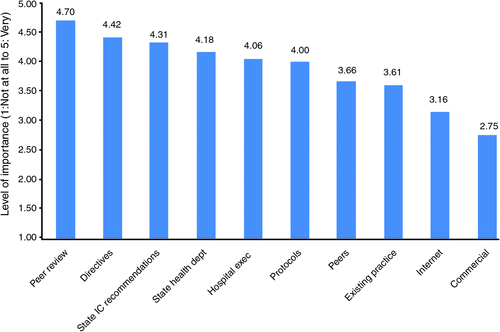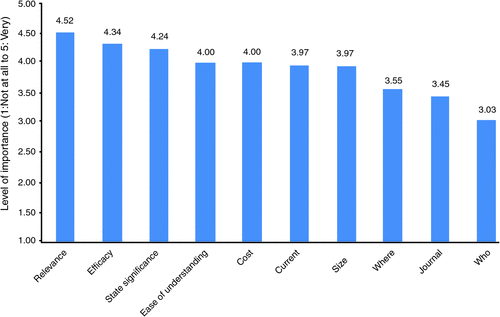Key priorities for Australian infection control: summary of findings from the launch of the Centre for Research Excellence in Reducing Healthcare Associated Infections
Katie Page A B , Nicholas Graves A , Kate Halton A , Emily J. Bailey A , Glenn R. Fulford A and Mike Whitby AA Institute of Health and Biomedical Innovation (IHBI), Queensland University of Technology, 60 Musk Avenue, Brisbane, Qld 4059, Australia.
B Corresponding author. Email: katie.page@qut.edu.au
Healthcare Infection 17(4) 133-135 https://doi.org/10.1071/HI12048
Submitted: 30 October 2012 Accepted: 2 October 2012 Published: 27 November 2012
Abstract
The launch of the Centre of Research Excellence in Reducing Healthcare Associated Infection (CRE-RHAI) took place in Sydney on Friday 12 October 2012. The mission of the CRE-RHAI is to generate new knowledge about strategies to reduce healthcare associated infections and to provide data on the cost-effectiveness of infection control programs. As well as launching the CRE-RHAI, an important part of this event was a stakeholder Consultation Workshop, which brought together several experts in the Australian infection control community. The aims of this workshop were to establish the research and clinical priorities in Australian infection control, assess the importance of various multi-resistant organisms, and to gather information about decision making in infection control. We present here a summary and discussion of the responses we received.
Implications
-
Assists clinicians and researchers in establishing future research priorities.
-
Aids better communication between different stakeholders in infection control.
-
Develops further networking opportunities and collaborations in the infection control community.
Introduction
The CRE-RHAI will generate new knowledge about strategies to reduce healthcare associated infections and to provide data on the cost-effectiveness of infection control programs and interventions. We hope to make a direct impact on infection control decisions at both clinical and policy levels. Our major research output will be a translation of information on the cost-effectiveness of infection control programs into health services policy and practice.
As well as launching the CRE-RHAI, an important part of this event was a stakeholder Consultation Workshop, which brought together several experts in the Australian infection control community. These experts included infection control practitioners, infectious disease physicians/microbiologists, government and policy workers and academics, as well as healthcare industry representatives. From the day there emerged several interesting ideas about infection control in Australia. We present here a summary and discussion of the responses we received.
Two surveys were distributed at the Consultation Workshop. One assessed established and emerging problem organisms most in need of future research, while the second measured several aspects about decision making in infection control. We received 32 responses for the organisms survey and 35 responses for the decision making survey, with a good representation of opinions from each of the key stakeholder groups in infection control.
Which organisms to study
In relation to each of the multi-resistant organisms, we measured four aspects: (1) the overall importance for prevention, (2) the likely difficulty in control, (3) the anticipated difficulty in treatment, and (4) the extent to which each organism represents an emerging threat. The top 3 responses and their means (on a 5-point scale from 1: Not at all to 5: Very) in each category are shown in Table 1.

|
Both carbapenem-resistant Enterobacteriaceae and Clostridium difficile appear in the top 3 a total of four times each making these two organisms important priorities for the infection control community. In addition, the best understood organism emerged as methicillin‐resistant Staphylococcus aureus and the least understood was Clostridium difficile, with over 80% of respondents reaching consensus on these two questions.
How to influence decision making
The CRE-RHAI is focussed on providing useful cost-effectiveness information and then targeting this to the right decision makers in order to influence policy. It was agreed by the infection control community that cost-effectiveness information is both valuable (M = 4.6A s.d. = 0.5) and useful for individual decision making (M = 4.2; s.d. = 0.8). Comments on the use of cost-effectiveness information included respondents not having control over budgets, a lack of relevance to local settings and the need for a greater focus on patient outcomes. However, it was also acknowledged that cost-effectiveness information is vital to persuade key policy decision makers.
Figures 1 and 2 show the importance of different types of evidence for infection control decision making and the importance attached to various aspects of scientific evidence. Peer review and directives (from State/Territory health departments or hospital executive) are the most important evidence types with both the Internet and commercial information being valued as the least important. When evaluating specific scientific evidence, efficacy and relevance are the two fundamental aspects which are important to infection control decision makers. Who conducted the research and where the research was conducted and published were rated as much less important.

|

|
Key priorities
A group discussion with open-ended questions about infection control research and practice revealed a range of priorities. First, with respect to what is working well in infection control there was general agreement that networking in the infection control community, particularly via the Australasian College of Infection Prevention and Control, is good and that the Australian Commission on Safety and Quality in Healthcare has a positive influence in terms of facilitating networking and providing advocacy. In addition, it was thought that surveillance, on a national level, is valuable but the method and dissemination could be improved.
Core areas in which improvement was thought to be needed include the provision of more resources (personnel and infrastructure), the need for more champions of programs to initiate sustained behaviour change, the need to make national programs individually and contextually relevant, and improved communication between jurisdictions and between infection control practitioners and infectious disease physicians.
Three key priorities that emerged from the group discussions were research into environmental cleaning, the need for better resourcing at both state and hospital levels and the need for training of heath care workers in infection control before they enter hospital practice. Critically, communication of the findings from the CRE-RHAI needs to reach infection control practitioners, and the preferred format for such was short ‘briefs’ that summarised the key points with a rationale for local implementation. It was also stressed that the CRE-RHAI should work with the Commission to get required changes on the Australian Health Ministers’ Advisory Council agenda and into national guidelines, so they become hospital key performance indicators, as this was seen as the best way to implement broad stable changes.
A concern was raised concerning the involvement of the private healthcare sector. Often the private sector is overlooked and it was thought that there needs to be greater involvement and communication between the public and private sector concerning infection control research and priorities.
Overall, the event was a great success and has helped to highlight the key issues in infection control as well as develop a much needed dialogue between researchers and health care professionals. This information will be essential in shaping the future direction of the CRE-RHAI. We would like to thank all those who took part. Further CRE-RHAI events are planned and we welcome continued support and feedback from the infection control community. Please contact Emily Bailey (Centre Manager) on e5.bailey@qut.edu.au for further information.
Conflict of interest
None of the authors have any conflict of interest pertaining to this work.
Funding
The CRE-RHAI is funded by the NHMRC and commenced in January 2012.
Acknowledgements
We would like to acknowledge all of the participants of the CRE launch and workshop.
A Likert scale: 1: Not at all useful/valuable to 5: Extremely useful/valuable.

